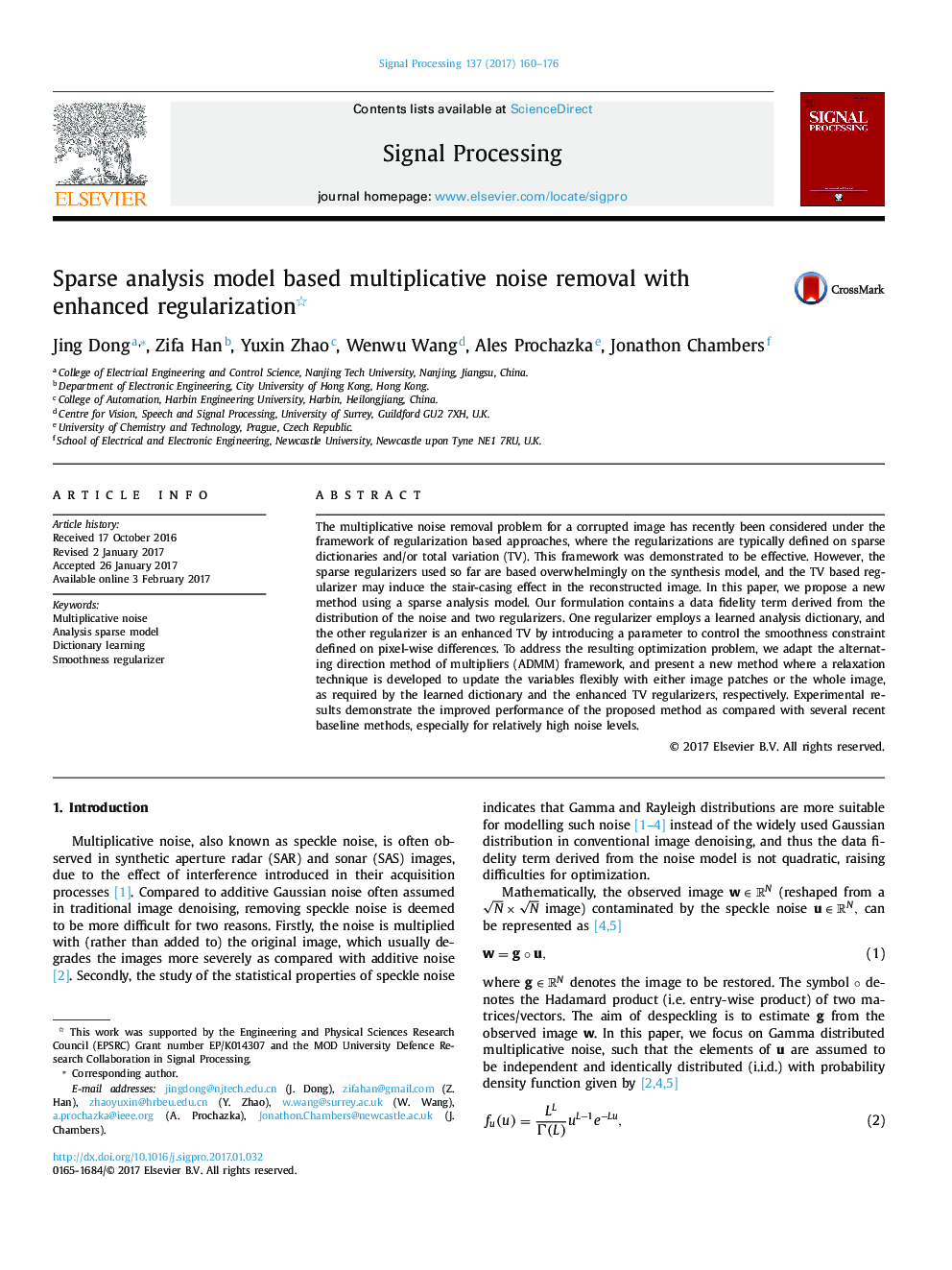| Article ID | Journal | Published Year | Pages | File Type |
|---|---|---|---|---|
| 4977664 | Signal Processing | 2017 | 17 Pages |
Abstract
The multiplicative noise removal problem for a corrupted image has recently been considered under the framework of regularization based approaches, where the regularizations are typically defined on sparse dictionaries and/or total variation (TV). This framework was demonstrated to be effective. However, the sparse regularizers used so far are based overwhelmingly on the synthesis model, and the TV based regularizer may induce the stair-casing effect in the reconstructed image. In this paper, we propose a new method using a sparse analysis model. Our formulation contains a data fidelity term derived from the distribution of the noise and two regularizers. One regularizer employs a learned analysis dictionary, and the other regularizer is an enhanced TV by introducing a parameter to control the smoothness constraint defined on pixel-wise differences. To address the resulting optimization problem, we adapt the alternating direction method of multipliers (ADMM) framework, and present a new method where a relaxation technique is developed to update the variables flexibly with either image patches or the whole image, as required by the learned dictionary and the enhanced TV regularizers, respectively. Experimental results demonstrate the improved performance of the proposed method as compared with several recent baseline methods, especially for relatively high noise levels.
Related Topics
Physical Sciences and Engineering
Computer Science
Signal Processing
Authors
Jing Dong, Zifa Han, Yuxin Zhao, Wenwu Wang, Ales Prochazka, Jonathon Chambers,
